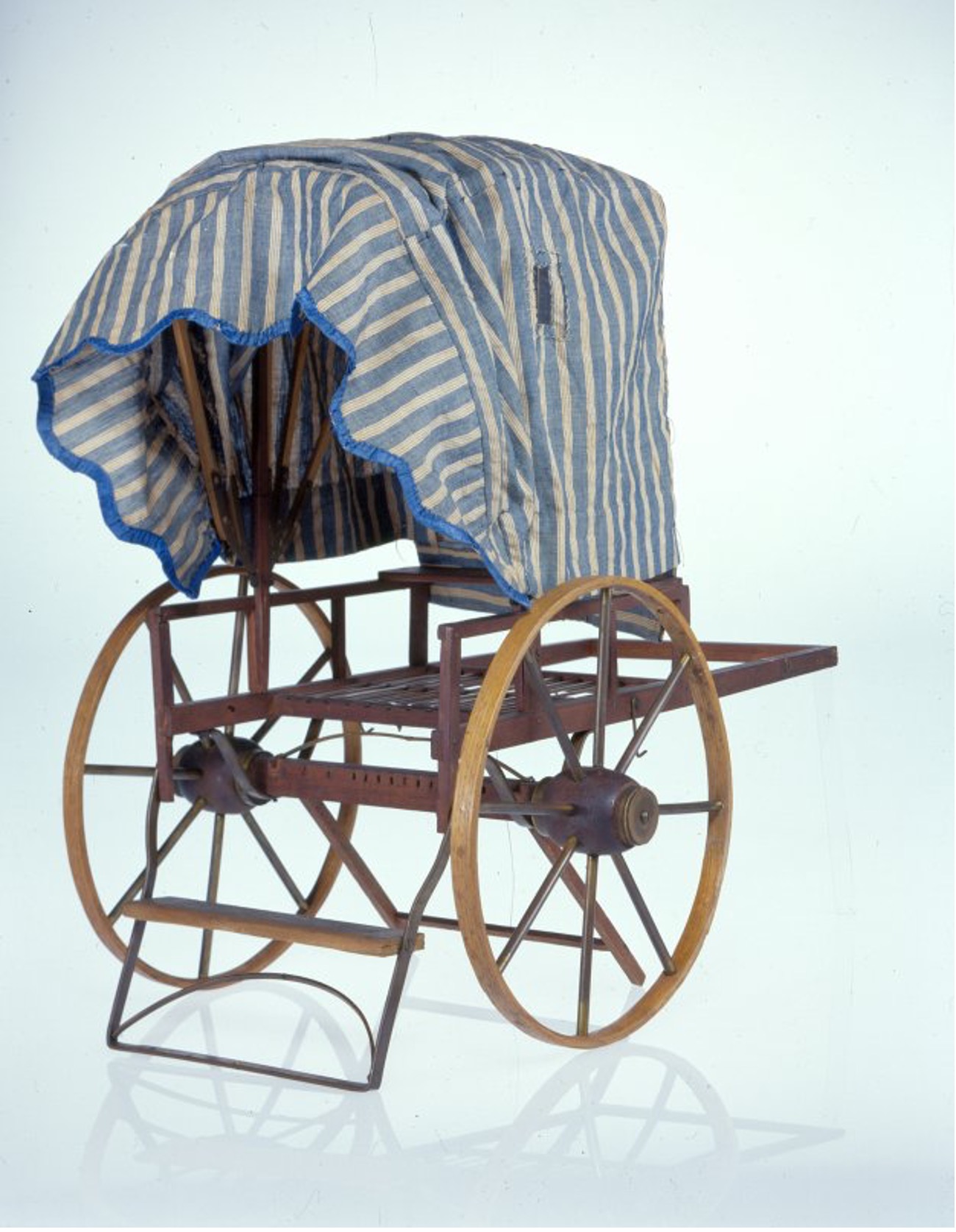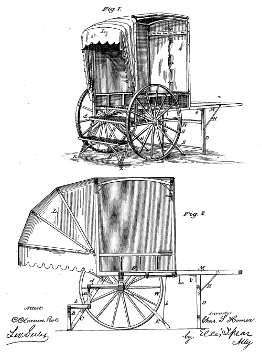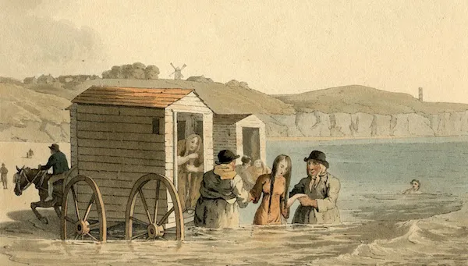While I am writing this on a rainy spring day, I look forward to the upcoming dry, warm and sunny days at the Delaware beaches. One of my favorite “beachy” patent models is this one for a Surf Hut.

 While this is called a “Surf Hut,” it falls under a category of inventions more commonly called “Bathing Machines.” Their purpose was to provide privacy and safety while changing and bathing as well as ease access to the choppy seas.
While this is called a “Surf Hut,” it falls under a category of inventions more commonly called “Bathing Machines.” Their purpose was to provide privacy and safety while changing and bathing as well as ease access to the choppy seas.
Once the user was seated inside, these wheeled vehicles were maneuvered past the breakers into the ocean by horses or a couple of stout beach attendants. The inhabitants stripped off their street clothes and hung them on pegs on the back wall. After changing into bathing clothes, they descended the back stairs into the ocean to bathe or swim. The retractable hood at the rear offered shade and privacy. After drying off and redressing, they would signal an attendant or raise a flag attached to the hut and it was hauled back to shore.
Sometimes the user would be accompanied by a member of the same sex called a “dipper” to help them in and out of the water and serve as a private lifeguard. In the image to the right, two dippers can be seen assisting a woman.
Dipper or no, few images of the time depict users of bathing machines having a good time. You won’t find people joyfully frolicking in the surf like the beachgoers of today. Victorians regarded ocean bathing as healthful, and certainly cooling, but treacherous. Though they used separate areas of the beach, both men and women wore bulky swimming clothing that became heavy when wet, and few were strong swimmers.
areas of the beach, both men and women wore bulky swimming clothing that became heavy when wet, and few were strong swimmers.
Were surf huts common in the U.S.? Perhaps not. No images were found of them in use at an American seaside resort. But a search of newspaper entries for “bathing machines” during the last half of the nineteenth century yielded thousands of results. If Americans were not using them, they were at least talking about them!
 On the other hand, the huts were very popular in Europe, especially in England. On the right is an engraving of one invented by a man in England named Benjamin Beale around the mid-18th century.
On the other hand, the huts were very popular in Europe, especially in England. On the right is an engraving of one invented by a man in England named Benjamin Beale around the mid-18th century.
Beale’s trade card in the archives of the British Museum advertised this invention as an “Umbrello Machine or Bathing Chariot.” It allowed folks to “Swim or Walk out from under it into a large Bay or Flatt.” He lived in Margate, which was a popular seaside resort town, and engravings, photographs, and postcards from the 19th century show such huts in use in the town. One is pictured below depicting these huts being moved into and out of the ocean.

The inventor of Hagley’s surf hut patent model, Charles Savage Homer, Sr. (1809-1898), was always looking to invest in the “next big thing.” He traveled widely in pursuit of many business ventures and get-rich-quick schemes. This included spending some time in Europe in the 1850s where he may have seen these huts in use. His patent attorney, Ellis Spear (1834-1917), was an officer in the famed 20th Maine regiment during the Civil War and had served as the U.S. Commissioner of Patents the previous year.
Though our peripatetic inventor never struck it rich, two of his sons became very successful. Charles Savage Homer, Jr. (1834-1917) earned a degree in chemistry from Harvard. He worked as an industrial chemist for Valentine & Company of New York City. He developed a formula for a varnish he called “valspar” that was so popular that the company changed its name. Still known as Valspar, its paints and coatings are still sold today in home improvement stores.
Another is the American artist Winslow Homer (1836-1910). While recognized as an eminent artist today, Winslow struggled to sell his paintings in the late1870s and early 1880s—around the time that this surf hut was invented. His brother financed the building of a home for their extended family in Prout’s Neck, Maine. The carriage house was later altered and expanded to become Winslow’s own art studio. He began using it in 1884 and continued to paint there until his death in 1910. It still stands today and is a registered National Historic Landmark.
Be sure to visit this patent model this summer near the entrance to Nation of Inventors, Hagley’s permanent exhibit celebrating American invention and innovation featuring over 100 patent models.
Chris Cascio is the Alan W. Rothschild Assistant Curator, Patent Models at Hagley Museum and Library
